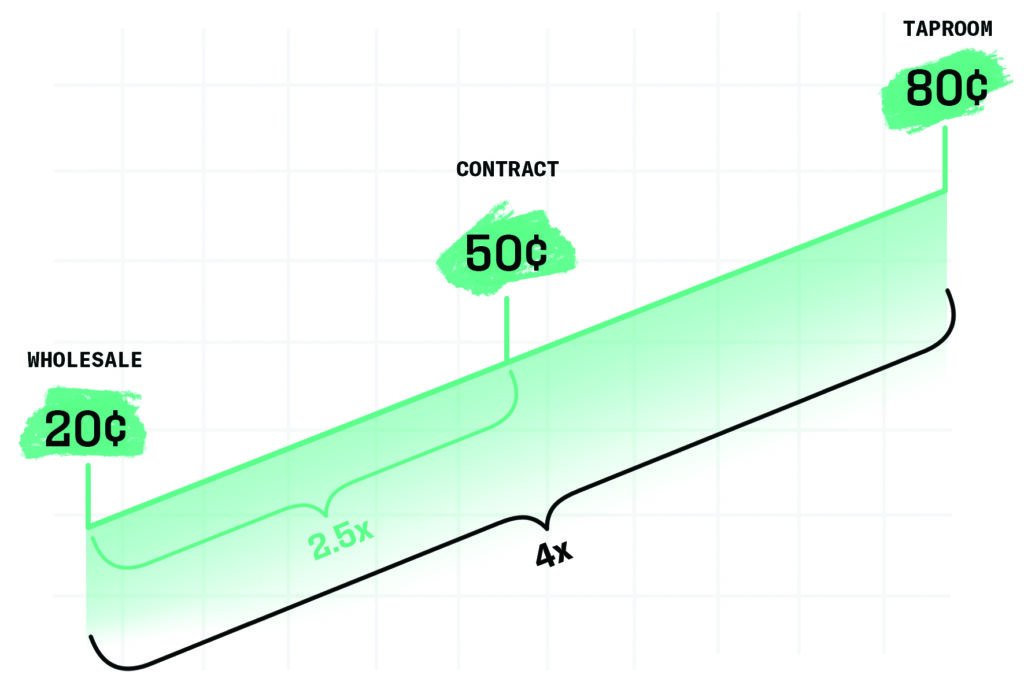
I walked in my kitchen the other night and was greeted by three children banging their fists on the dinner table chanting in unison:
“Amazon is never wrong!”
Imagine this?
These days, the damn kids are programmed at a very young age that a button on my phone will deliver them stuff.
I used to roam the mall with my parents and get wacked on the back of the head if I asked to step foot into Turtle’s Records and Tapes.
Not sure if you have heard the news but Amazon is going through some major layoffs. 17,000 was the last report I heard.
Are the layoffs a post holiday norm? Or could it be the new reality for all the tech layoffs that are happening.
Amazon, when firing on all cylinders, can do one thing really well. They can deliver items fast. As my children know, their service can get you just about anything you want…fast.
Amazon is called a retailer, always compared to Walmart and Target, but are they? Amazon’s superpower is their logistics. Warehousing millions upon millions of items, and delivering them, fast.
This superpower, for me, has them tracking more of a middleman, or in brewing terms, the distributor.
What do you think?
Yes, yes, I know they white label many items, which would make them a retailer, but at the end of the day, their distribution network is what sets them apart.
So for the purposes of this conversation, let’s call Amazon a distributor. (I love when conversations are one-sided.)
Historically, the winners in distribution have options. Options could mean SKU variety, warehousing space, high volume and low margins.

Distributors make their money on selling quantity, not necessarily quality.
This is true for Amazon and your beer distributor.
When it comes to beer distributors, they play a very important role in the ecosystem. Self-distributing* breweries will admit, it ain’t easy moving all that product, and sometimes the pros do it better than we can.
The main role beer distributors play is to move your beer from point A to point B for you. Breweries often confuse this with also selling the product for you. Active selling by distributors is a rare event. I do think that distributors can assist the sale, only if the brand sits within the “top 5” of their craft portfolio.
This means, if you are with a distributor that has 20 craft beer brands in their portfolio, you better have a SKU in their top 5 brands, by volume, if you want to remain top of mind.
What if I am not in the top 5?
Self distro, just because The Hilton Sisters aren’t driving your product around town doesn’t mean you are off the hook. Retailers rank their suppliers too.
Margins
A question I get all the time is what should my wholesale profit margins be? How much should we be keeping through this sales channel?

The graph above is a representation of net margins, in dollars, when you compare the taproom, contract brewing, and wholesale.
If you turn your focus to the low end of the graph, I am saying you keep 20 cents on every dollar sold in wholesale.
Not a lot, I know.
But this is a blended average among all your SKU’s. And please remember net margin does include some labor, overhead, and brewery expense.
Our data analysis returns the following targets if you look at margins by SKU:
- Half Barrel – .20-.30
- Sixtel – .50+
- 12 oz cases – .25-.35
- 16 oz cases – .40-.50
Craft beer can’t really win on quantity sold. It’s very important for craft to keep the integrity of wholesale pricing respectable. This means craft must remain at a premium price in order to maintain the margins laid out above.
This seem daunting?
Let’s simplify it:
Can you find out where you rank with your distributor? Just ask them. They may not want to volunteer this info at first, but you can dig a little by focusing on a style or SKU.
Do you know your margins by SKU? This information is so critical when it comes to which beers we should be selling wholesale. The last thing that I would want is for beers to be going out the door at a loss. If you are stuck here, I know someone who can help you.
With the information above you can begin to tailor your wholesale portfolio to winners. This may require some hard decisions, but at least you will be armed with the information to make those decisions.
If you are interested in learning more about your wholesale margins so you can dial in your decision making, book a call with me below. I would love to help you.
—cf
*Self Distributing Breweries – The value of your distribution rights are increasing every time a brewery closes. Wholesalers need products to remain profitable. The industry is so affixed in Short Game thinking. This mindset is picking breweries off one by one. And guess who that ultimately affects, the wholesaler. Sit tight, fight the good fight, your payday may be closer than you think.
